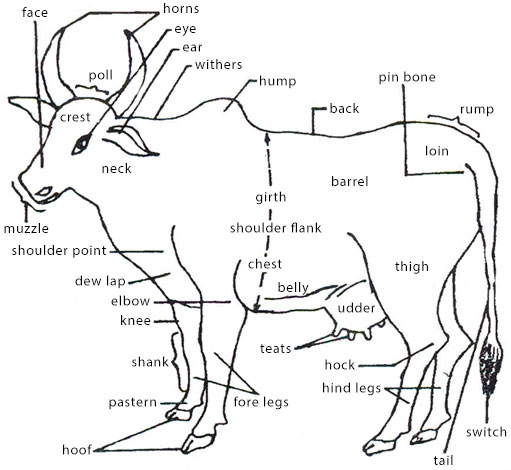LIVESTOCK MANAGEMENT
CONTENT- Meaning of Livestock Management
- Requirements for Livestock Management
- Systems of Raising Livestock
- Cattle Management: Requirements for Cattle Management; Breeds of Cattle; Systems of Cattle Management; Economic Importance of Cattle; Management Practices in Cattle Production;
- Poultry Management: Definition of Poultry; Importance of Poultry; Breeds of Domestic Fowl; Names of Different Types of Poultry; Systems of Poultry Production; Housing in Poultry Management; Feeding in Poultry Management; Hygiene in Poultry Management; Other Management Practices in Poultry
- Pig Rearing: Breeds of Pigs; Systems of Rearing Pigs; Housing in Pig Rearing; Feeding in Pig Rearing; Common Diseases of Pigs;
- Rabbits Rearing: Breeds of Rabbits; Housing in Rabbits Rearing; Feeding in Rabbits Rearing; Hygiene in Rabbits Rearing; Importance of Rabbit Rearing; Problems Militating against Rabbit Production in Nigeria; Common Diseases of Rabbit
- Goats Rearing: Importance of Keeping Goats; Factors Responsible for the Success of Goat Production; Breeds of Goats; Exotic Breeds of Goats; Systems Used for Goats Keeping; Housing in Goats Rearing; Feeding in Goats Rearing; Feeding in Goats Rearing; Hygiene in Goats Rearing
- Sheep Rearing: Breeds of Sheep; Housing in Sheep Rearing; Feeding in Sheep Rearing; Hygiene in Sheep Rearing
Meaning of Livestock Management
Livestock management refers to the activities carried out by a farmer in his effort to raise farm animals from day old to the point of marketing or disposing the animals. It involves the provision and maintenance of adequate housing, good feeding, sanitation and medicare.Requirements for Livestock Management
In order to successfully manage livestock for maximum benefits, the following factors (requirements) have to be made available:- Water
- Housing in good location with the necessary equipment
- Favorable climatic conditions
- Knowledge of the breed of animals to be produced
- Knowledge of pests and diseases the affect the proposed animals
- The technical expertise about the animals to rear
- Nearness to market, good (motorable) roads and storage facilities
- Finance available for the operating farmers
Systems of Raising Livestock
There are three systems of raising livestock- Extensive or free range system
- Semi-intensive system
- Intensive system
Extensive or Free Range System
In this system, animals are left to search for food for themselves. It is the oldest and traditional method of rearing animal practiced generally in Nigeria.Semi-intensive System
In semi-intensive system animals are raised partly indoor and partly outdoor. Some housing and feeding are basically provided for the animal but they freely look for food and water most part of the day. Supplementary feeding is usually provided in form of concentrates,minerals, vitamins, salt licks within the shelter are provided for them.Intensive System
This is the system whereby animals are restricted or confined within a pen or a cage and all feeding, watering, medication, vaccination and other management are provided.Cattle Management
Requirements for Cattle Management They belong to the group of known as Bovidae. These are ruminants which are reared for meat, milk hide and skin, blood, bone and for work.
Breeds of Cattle
1. Beef Cattle: This type of breed are reared purposely for meat. Examples include;You are viewing an excerpt of this lesson. Subscribing to the subject will give you access to the following:
- NEW: Download the entire term's content in MS Word document format (1-year plan only)
- The complete lesson note and evaluation questions for this topic
- The complete lessons for the subject and class (First Term, Second Term & Third Term)
- Media-rich, interactive and gamified content
- End-of-lesson objective questions with detailed explanations to force mastery of content
- Simulated termly preparatory examination questions
- Discussion boards on all lessons and subjects
- Guaranteed learning